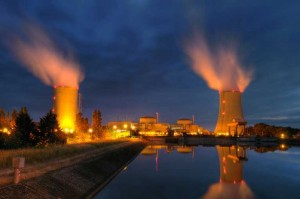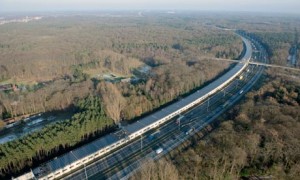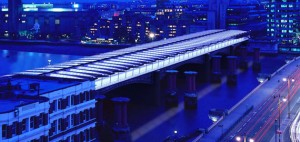 Infineon Raceway, in partnership with Panasonic, has completed a major milestone in energy conservation with the successful installation of 1,652 solar panels at the famed Northern California raceway. The project, part of Infineon Raceway’s long-standing sustainability initiative, was unveiled to the racing world. The event offered members of the media the opportunity to examine the installation, meet key Infineon Raceway and Panasonic Enterprise Solutions Company executives, and learn more about Panasonic’s plan to become the number one green innovation leader in the electronics industry by 2018 and Infineon’s goal of becoming one of the most energy-efficient raceways in the world.
Infineon Raceway, in partnership with Panasonic, has completed a major milestone in energy conservation with the successful installation of 1,652 solar panels at the famed Northern California raceway. The project, part of Infineon Raceway’s long-standing sustainability initiative, was unveiled to the racing world. The event offered members of the media the opportunity to examine the installation, meet key Infineon Raceway and Panasonic Enterprise Solutions Company executives, and learn more about Panasonic’s plan to become the number one green innovation leader in the electronics industry by 2018 and Infineon’s goal of becoming one of the most energy-efficient raceways in the world.
The high-efficiency solar panels, manufactured by Panasonic’s Sanyo division, will cover 41-percent of the raceway’s energy usage. In a further move designed to reduce energy consumption, Panasonic has also provided the raceway with a low-energy LED video board, replacing the current installation on Highway 37. To emphasize the importance of energy conservation, Infineon Raceway had the solar panels installed so that they would be visible to the majority of fans attending events at the facility. Panels have been placed above the Turn 10 Sound Wall, the Main Grandstand, the administration office and the Raceway Cafe, as well as the Jim Russell Racing Drivers School building. Race fans will have an opportunity to see them during this weekend’s Toyota/Save Mart 350.
energy usage. In a further move designed to reduce energy consumption, Panasonic has also provided the raceway with a low-energy LED video board, replacing the current installation on Highway 37. To emphasize the importance of energy conservation, Infineon Raceway had the solar panels installed so that they would be visible to the majority of fans attending events at the facility. Panels have been placed above the Turn 10 Sound Wall, the Main Grandstand, the administration office and the Raceway Cafe, as well as the Jim Russell Racing Drivers School building. Race fans will have an opportunity to see them during this weekend’s Toyota/Save Mart 350.
Separate from the energy savings achieved by the solar panel arrays, Panasonic’s new full-color, dual-sided LED video board will use less energy than the previous sign, which was powered by 7,000 traditional light bulbs. Easily visible from Highway 37, the new board measures 5.77’ high by 17.32’ wide, and uses 57,600 LEDs to create messages brighter than the older technology. Yet, it consumes just 50% of the energy of the board it replaces. As part of its commitment to achieving a sustainable future, Infineon Raceway has already introduced low/no carbon racing, boasts a comprehensive recycling program and even uses 3,000 sheep to trim the grass around the track and grounds. The photovoltaic cells in Panasonic’s solar panels are manufactured in the United States in Salem, Ore. The aggregate impact of the installed panels is generation of 353 kilowatts of power. It is estimated that the installation will save 34,000 barrels of oil over 30 years.
QUESTPOINT SOLAR ON YOUR MOBILE






